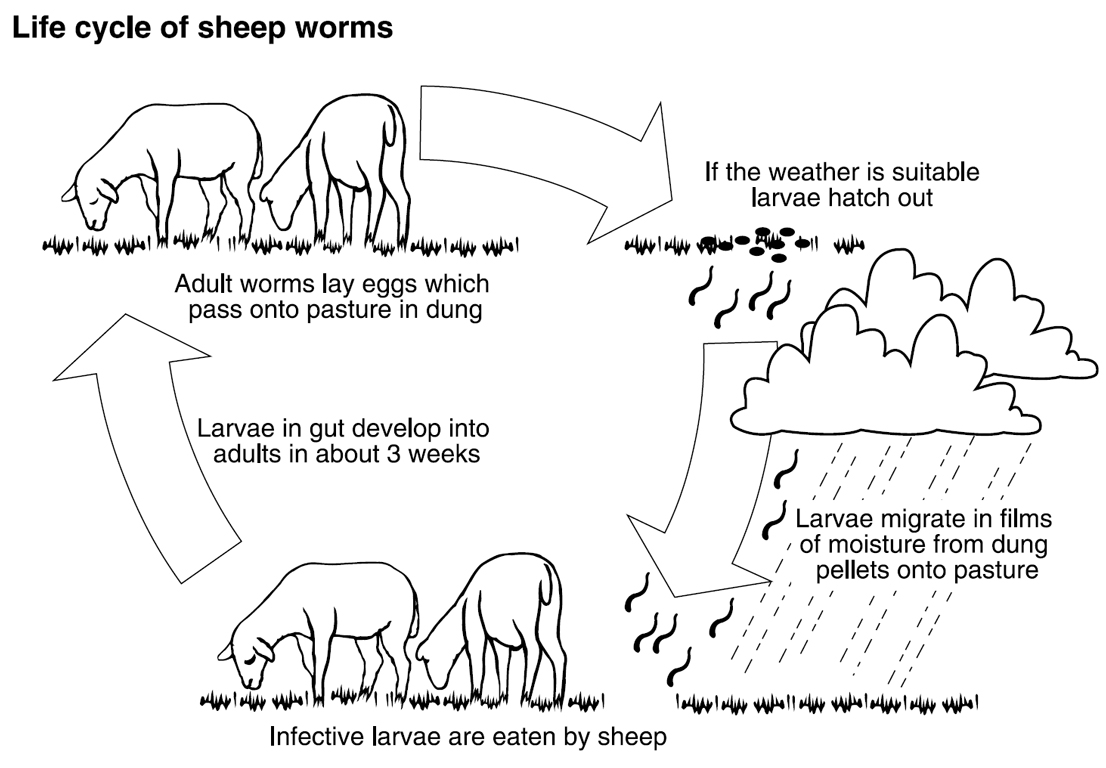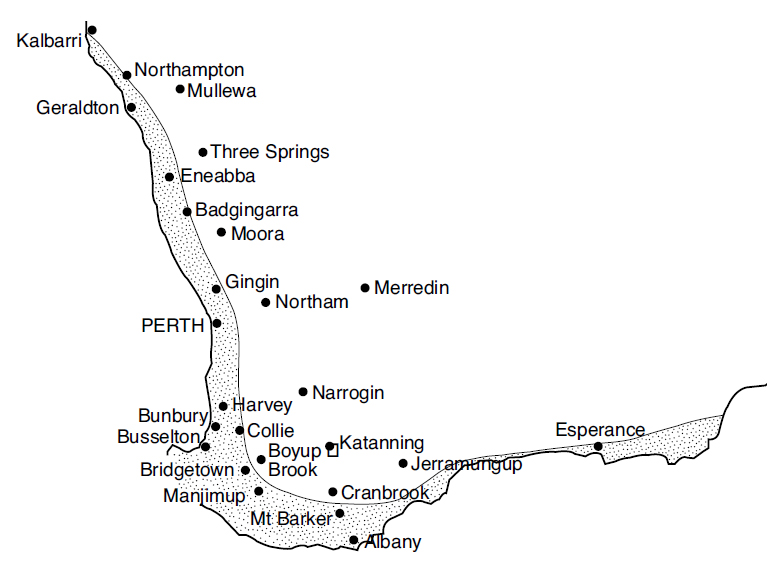Life cycle
The worms are up to 2.5 centimetres (cm) long and occur in the abomasum or fourth stomach of sheep and goats. Female worms have a red and white striped appearance, hence the name ‘barber's pole’.
Their life cycle is typical of roundworms of sheep (Figure 1). Adult worms lay eggs which pass out in the faeces of the host. Barber's pole worms are the highest egg producers of all sheep worms. The eggs hatch within a few days and microscopic larvae emerge. They migrate on to the pasture, where they may be ingested with the herbage grazed by sheep. In the sheep’s gut, larvae develop into adult worms in about three weeks.

Distribution
Climatic conditions determine where barber's pole worms occur and when they are most prevalent during the year. The development of eggs and larvae is limited to areas and seasons where pastures are moist during the warm months of the year. However, the larvae can survive on pasture for some time, particularly during cool conditions and can can occasionally affect sheep at other times of the year.
In WA, barber's pole worm is mainly a problem in the higher rainfall areas from late spring to early summer and from late autumn to winter. Where the annual rainfall decreases sharply as the distance from the coast increases, it is significant only in a narrow coastal strip. Elsewhere, such as on the south coast, it may occur more than 60 kilometres (km) inland (Figure 2).
The major areas are along the south coast from Walpole to Albany, where it may occur up to 60km inland, and further east in a narrower (20km) strip. On the west coast, problems are more sporadic and only occasionally occur more than 20km from the coast, but can occur from north of Geraldton and down to the Margaret River district.

In general, haemonchosis (the disease due to barber's pole worm) rarely affects sheep in areas where the rainfall is less than 600 millimetres (mm). However, outbreaks do occur in drier areas such as the central west coastal district if there is substantial rainfall during summer. There are occasionally outbreaks on northern pastoral properties, following successive wet years with prolonged heavy rainfall.
